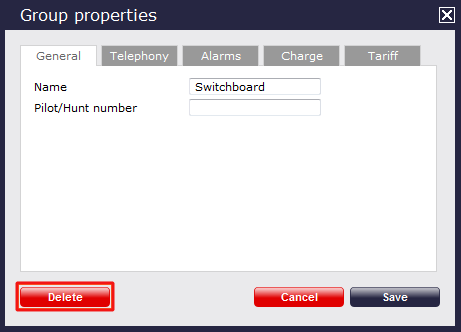User groups
What is a User group?
User groups are containers of users and they often mimic the organisational structure of your company, allowing senior management to report on calls by department. Access to the Directory can be restricted to one specific user group, so that managers can report only on their own department; for information on how to apply these restrictions, refer to the Web users section.

The Discovered users folder
When you first configure the system, a user group - called Discovered Users - is created by default in the Directory. The function of the Discovered users folder is to pick up newly discovered extensions and it should not be renamed or deleted from the system. Once you add your own groups in the Directory, extensions can be moved across from the Discovered Users folder into the newly created ones; for information on how to move users from one group to another, check the Moving a user between two groups section.
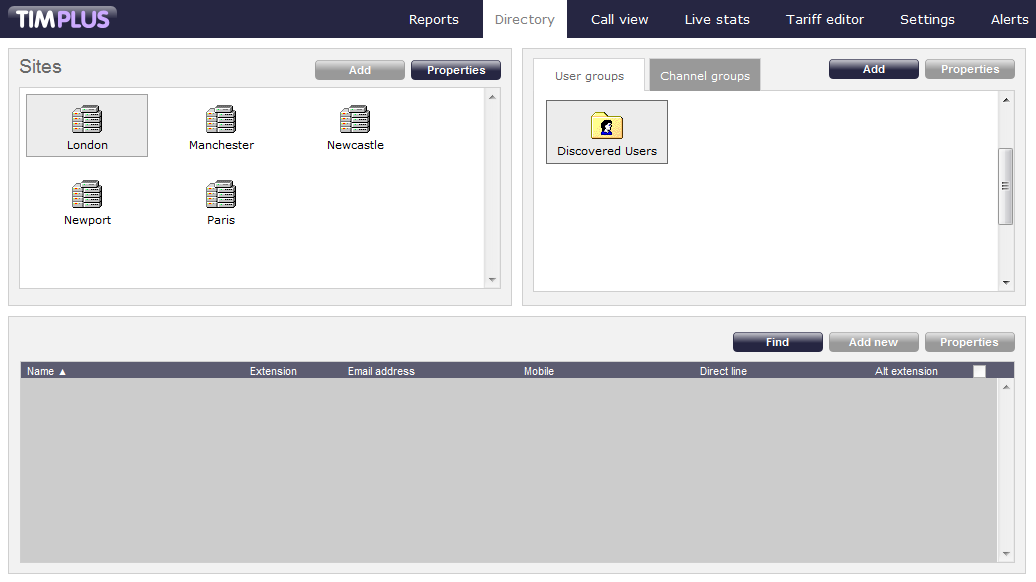
If you are using third party synchronisation, e.g. Cisco AXL, all user groups are being imported automatically in TIM Plus, preserving the directory structure from the phone system.
Adding a User group
To add a new user group to the Directory, click on the button at the top-right hand side of the Groups panel.
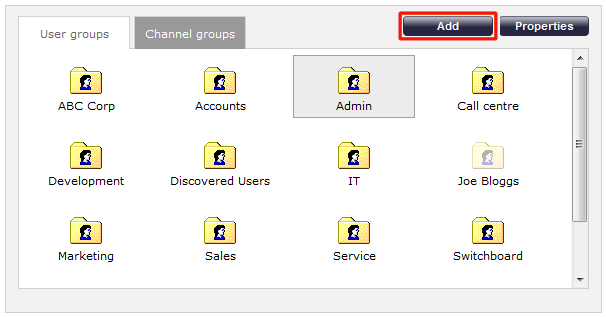
A new window will appear, allowing you to add the name of the group and its pilot/hunt number, if applicable.

Click on the button to add the new group to the Directory.
Configuring a User Group
To configure the properties of a group, highlight the group you are interested in and click on the button at the top-right corner of the panel:
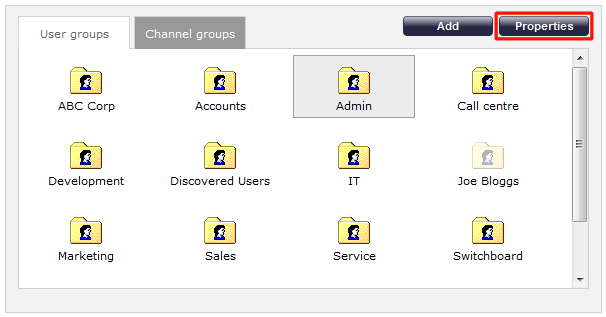
A new window will open, where you can configure the properties of your user group. Each tab in the Group properties window will be explained below:
General
The General tab allows you to enter a name for your user group, by which it can be easily identified in the system; usually, the name relates to the role the group plays in your internal organisational structure, e.g. Accounts, Sales, IT etc.If the group has a pilot/hunt number, you can enter this in the box provided.

Telephony
The Telephony tab gives you the option to exclude the current selected group from being logged or recorded in the system - assuming a call recording devices is integrated with TIM Plus.
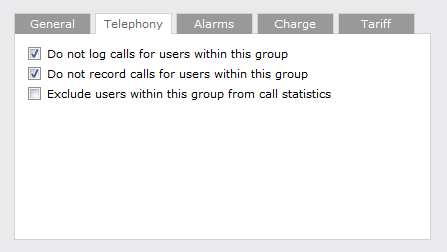
- Do not log - calls are not being logged and the call recordings - if applicable - are not accessible. The associated audio file is not being deleted, but the recording is not be accessible because there is no call log to be matched against.
- Do not record calls - calls are not being recorded;
- Exclude users from call statistics - calls are logged but not included in any Stats Points, therefore, they will not be shown on display boards.
Any users in a group that is set to Do not log will not count towards your user license. |
Alarms
Alarms for any group can be set to be trigerred by specific events (e.g. when calls above a certain duration are made, when specific numbers are dialled or when defined cost-thresholds are exceeded)
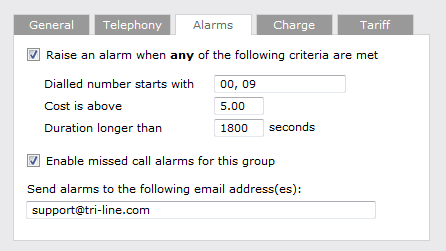
Dialled number alarm
Alarms can be set to activate when a part or full number is dialled. If you want to add a series of full or partial numbers, you can separate these entries by a comma, as shown above. Acceptable formats include: 00, 09, 020726526, 02072652600.
Cost alarm
You can trigger an alarm to be activated when a call exceeding a pre-set cost is made by anyone on this site. Note that the cost will relate to the local currency. For example, in the screenshot above, the 5.00 would be £5 in UK, €5 in Europe or US$5 in USA.
Duration alarm
An alarm can be activated when a call exceeding a predetermined duration is made by anyone in this User group. All durations are shown in seconds (e.g. 30 minutes = 1800 seconds)
Missed call alarm
You can be alerted if any calls are missed for the User group, by ticking the box alongside the Enable missed call alarms for this group, then type in the e-mail address of the person who you would like to send notification to as shown above. You may type multiple e-mail addresses as long as you separate them by comma.
Charge
This section allows you to automatically uplift the cost of any calls made by this group. To apply the charge, enter the percentage by which you would like to mark-up calls, as shown below:
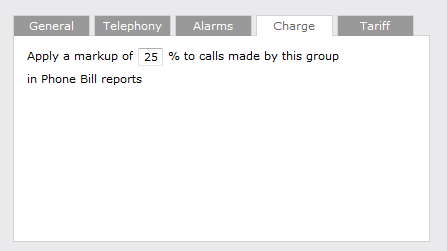
Tariff
This section allows you to select the tariff that will apply to calls made by this User group.

By default, TIM Plus is supplied with a standard BT tariff which will automatically pick up national, international and mobile dial codes. Bespoke tarfiffs can be provided. For costing contact your supplier or [email protected] who can refer you to the appropriate person for pricing.
Renaming a User group
To rename a User group, highlight the group you want to amend and click on thetab.

In the new window, highlight the current name and overwrite this with the new group name, then press.
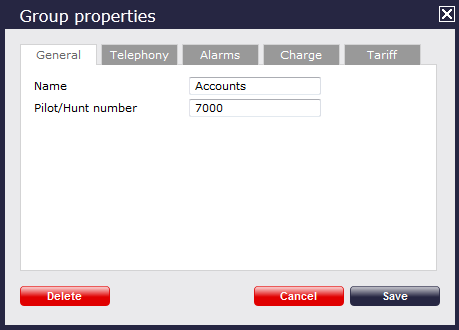
Deleting a User group
PLEASE NOTE: When you are deleting a User group, you are deleting all the information contained within the group, including all users and the calls associated with those users! |
To remove a User group from the Directory, select the group you want to remove and click on thebutton. In the new window that opens, you have the option to delete the selected group. You will also be asked to confirm the deletion, in order to prevent groups being deleted accidentally.
